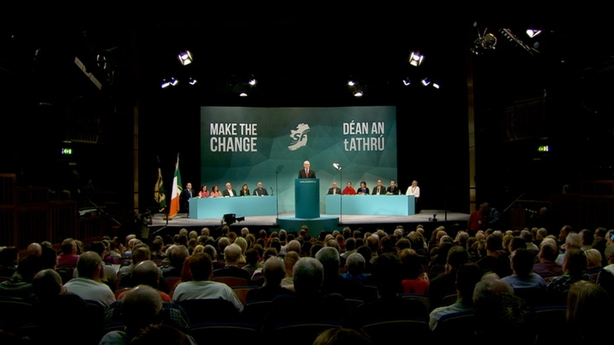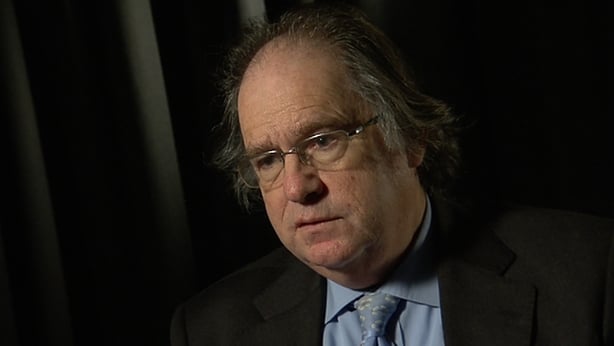So students and those working away from home won out over the rugby fans!
Governments have fiddled around with the voting day over the last 20 years, veering from the traditional Thursday to Friday and back again. Friday, it was argued, suits those going "home" for the weekend, where they are registered and should serve to make it easier for many young people away at college to vote, writes Michael Marsh, Emeritus Professor, Trinity College Dublin.
There is no obvious sign that this has made any difference, although in the absence of much real data on who votes and who does not, it is not easy to know. Bertie Ahern blamed a Friday vote for depriving him of an overall majority, as his voters had left the city.

We have seen little change in turnout rates, but then other things, like the perceived closeness or importance of the election, might play a big part here and would have to be taken into account.
Most of our EU colleagues who have higher turnouts vote at the weekend – sometimes Saturday and Sunday – but we have shown no appetite for such change as yet.
We do have some good information on who votes and who does not from the 2002 Irish National Election Study, well funded by the government under a programme for research in third-level institutions.
A gold standard probability survey, carried out by the ESRI, questioned over 2,600 people about their vote and the reasons behind it.
While about 400 of the respondents said they had not voted, further research on electoral registers was able to establish that some who claimed to have voted had not done so, resulting in the study including some 1,800 voters and 800 non-voters, proportions close to turnout in 2002. This remains the best information on who votes and who does not.
Of course, 2002 was not 2016 (which needs a study of its own) but it does allow us to explore some characteristics of non-voters. This was discussed in the report of the study, published in 2008. [Michael Marsh, Richard Sinnott, John Garry and Fiachra Kennedy, The Irish Voter, Manchester University Press. See also www.tcd.ie/ines].
One of the most striking findings is that turnout likelihood increases a lot with age, but falls off in slightly in the 65-74 age group, and even more in the 75+ age group.
Gender differences are small, but there are occupational differences, with manual workers 4% less likely to vote than non-manual workers. Of course, we know geography matters: turnout is higher outside Dublin. People contacted by a party were also more likely to vote than those who were not.
The study explored reasons why people did not vote, and these fell into two main categories: some were simply not interested, and others simply could not find the time on the day. This is a finding repeated widely.

Making voting easier – weekend voting, much more flexible rules for postal voting, or online voting as exists in several countries – would make it more likely that the latter group would vote, but would do little for the alienated or uninterested group.
Turnout is generally valued as a sign of interest and involvement in politics. And a high turnout arguably makes election outcomes more representative. In particular, if some social groups do not vote, parties may pay them little attention in their platforms and policy priorities.
It has been generally assumed that lower turnout does benefit certain parties, most notably those of the right rather than the left. However, the systematic evidence for this is harder to find. We need to be able to say with some degree of accuracy who the absent voters would have supported had they actually been able or willing to vote.
On the basis of our 2002 study, one analysis set out to do that. Using an extensive battery of attitudinal and social background questions, the study predicted the most likely choices of the non voters [Patrick Bernhagen and Michael Marsh, Missing Voters, Missing Data: Using Multiple Imputation to Estimate the Effects of Low Turnout, Journal of Elections, Public Opinion and Parties, 20, (4), 2010, p447 – 472].
The technique which was used worked well in predicting the (reported) choices of actual voters so can be presumed to have some validity. The study then compared the election result in the sample of known voters (very close to the actual outcome), with that predicted had the whole of the sample voted.
The results indicated that full turnout would not have made a big difference. Full turnout might have meant another 1-2% for FG – who had a very bad election – and 1% for SF but no big boost to Labour or even Independents.
In more recent years, some polling companies adjust their results by removing from their sample those less likely to vote.

This generally reduces the SF vote in comparison to other surveys, but differences are often small.
Of course, 1-2% could make a big difference if things are tight, and at constituency level, the contest is always keenly fought with small numbers of votes making the difference.
Even so, this evidence suggests that there is no pot of gold out there for the party that mobilises the non voter. Nor will Thursday, Friday or even Sunday voting make much of a difference to the outcome.
But facilitating voters should still be on the agenda for the new government. If it follows the advice of the Joint Oireachtas Committee on the Environment and moves to set up an Electoral Commission, such as exist in most other countries, that Commission might make it one of its first tasks to find out how it can ensure everyone is registered properly, and that choosing to vote does not mean postponing the trip to Twickenham, or making different arrangements to go home to the family.
By Michael Marsh, Emeritus Professor, Trinity College Dublin


